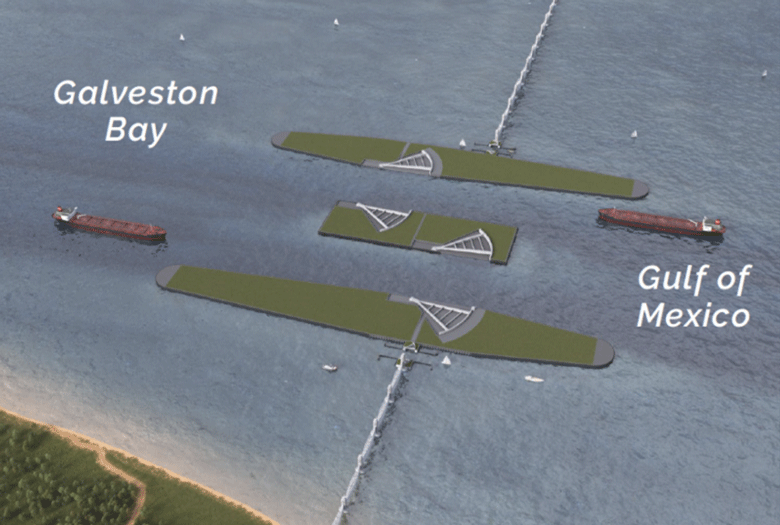A recent Southern Maine Planning & Development Commission report warned that some 3,500 acres of land in Wells, Kennebunk, and York were at increased risk of flooding because of rising sea levels. The commission is working with a coalition of municipalities and organizations to plan how best to prevent flood damage to these communities.
The communities are among many attempting to mitigate the risk of increased flooding and storm surge because of climate change, and several major ports in the U.S. are taking a page from the engineering history of The Netherlands. That low-lying country created a system of barriers and sea gates to protect against storm surge after a 1953 flood killed more than 1,800 people.
Planners in Houston and Galveston have been working for more than a decade to gain support for creating a similar system to protect the southeastern Texas coastline after a 2008 hurricane devastated the area. Hurricane Ike caused storm surges of 19 feet, killing dozens in Texas and severely impacting the state economy for years. As bad as the storm surge was, it was predicted to be worse, and climate scientists warn that the threat of high storm surges will only increase.
The plan would extend an existing seawall along Galveston Island and create a massive gate system.
In the immediate aftermath of the storm, William Merrell, a marine and environmental science professor with Texas A&M University at Galveston, drew up a plan for what has been dubbed the Ike Dike. The plan would extend an existing seawall along Galveston Island and create a massive gate system in Galveston Bay to protect against storm surge.
In September, the U.S. Army Corps of Engineers released its proposal for the dike project.
The Corps plan has been a long time coming, says Bob Mitchell, president of the Bay Area Houston Economic Partnership and the vice president of the Gulf Coast Protection District. He also was one of the first to lobby in support of the plan. Building grassroot support for such a project has taken years of hard work, he said.
“We started with everybody thinking it was a joke, ‘Never going to happen’ to ‘It’s happening,’” Mitchell said. “It took 14 years and hundreds of speeches.”
The plan now enjoys bipartisan support in the state, and Texas state lawmakers recently passed a bill to create The Gulf Coast Protection District, which would coordinate the raising of local funding for the project and oversee the dike after it’s built.
However, there still is not yet consensus on the project. Some homeowners worry the gate system will ruin the scenic views and damage tourism, while environmentalists have expressed concern about how the project might disrupt fish and shrimp migration.
There also are those who think the plan does not go far enough to protect against future storms. Jim Blackburn, co-director of the Severe Storm Prevention, Education, and Evacuation from Disaster Centers at Rice University, is among those advocating for creating a series of earthen structures closer to the coast to slow down storm surge that the gate structure can’t handle.
The problem, Blackburn said, is that the Army Corps of Engineers can only factor in surges from recorded storms. Climate change modeling suggests that storm ferocity and storm surge likely will increase in the near future, but the Corps methodology can’t account for that, he said.
“This is a problem that everyone in the United States is going to encounter until the Corps changes their methodology,” Blackburn said.
“All engineering in the country is really based on the past. We really haven’t learned how to think about designing in the context of the storms of the future.”





